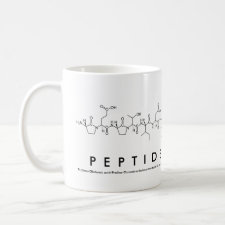
Authors: Tan L, Deng FF, Luo XY, Pan XH, Zhang L, Marina ML, Jiang ZJ
Article Title: Glycosyl imprinted mesoporous microspheres for the determination of glycopeptide antibiotics using ultra-high performance liquid chromatography coupled with tandem mass spectrometry.
Publication date: 2021
Journal: Journal of Chromatography A
Volume: 1659
Article Number: 462630.
DOI: 10.1016/j.chroma.2021.462630
Alternative URL: https://www.sciencedirect.com/science/article/pii/S0021967321007548
Abstract: Glycopeptide antibiotics are critical weapons against serious Gram-positive resistant bacteria, and therefore the development of analytical methods for their determination is essential. In this work, with the aim of extending the scope of molecularly imprinted mesoporous materials to the recognition of large molecules such as proteins and peptides, we selected the glycosyl moiety of glycopeptide antibiotics as a template and synthesised a boronic acid functional monomer by click chemistry reaction to prepare glycosyl imprinted mesoporous microspheres. On the basis of boronate affinity, the template and the functional monomer formed a self-assembly structure that was incorporated into the silica framework during polymerisation. The removal of the glycosyl moiety created cavities with boronic acid groups covalently anchored to the pore walls of the glycosyl imprinted mesoporous microspheres. The resultant microspheres showed regular spherical shape, narrow size distribution and porous structure and exhibited high adsorption capability and fast adsorption kinetics. The size exclusion effect of the mesoporous structure prevents large molecules from entering the cavities, while the glycosyl imprinted cavities provide selectivity for glycopeptide antibiotics. The glycosyl imprinted mesoporous microspheres were employed to separate six glycopeptide antibiotics in serum samples, which were then determined using ultra-high performance liquid chromatography tandem mass spectrometry. The proposed method exhibited satisfactory linearity in the range of 0.1 to 20.0 μg/L, demonstrating great potential for the determination of glycopeptide antibiotics in serum samples
Template and target information: glycopeptide antibiotics
Author keywords: Glycopeptide antibiotics, molecular imprinting, boronate affinity, Mesoporous microspheres



Join the Society for Molecular Imprinting

New items RSS feed
Sign-up for e-mail updates:
Choose between receiving an occasional newsletter or more frequent e-mail alerts.
Click here to go to the sign-up page.
Is your name elemental or peptidic? Enter your name and find out by clicking either of the buttons below!
Other products you may like:
 MIPdatabase
MIPdatabase









